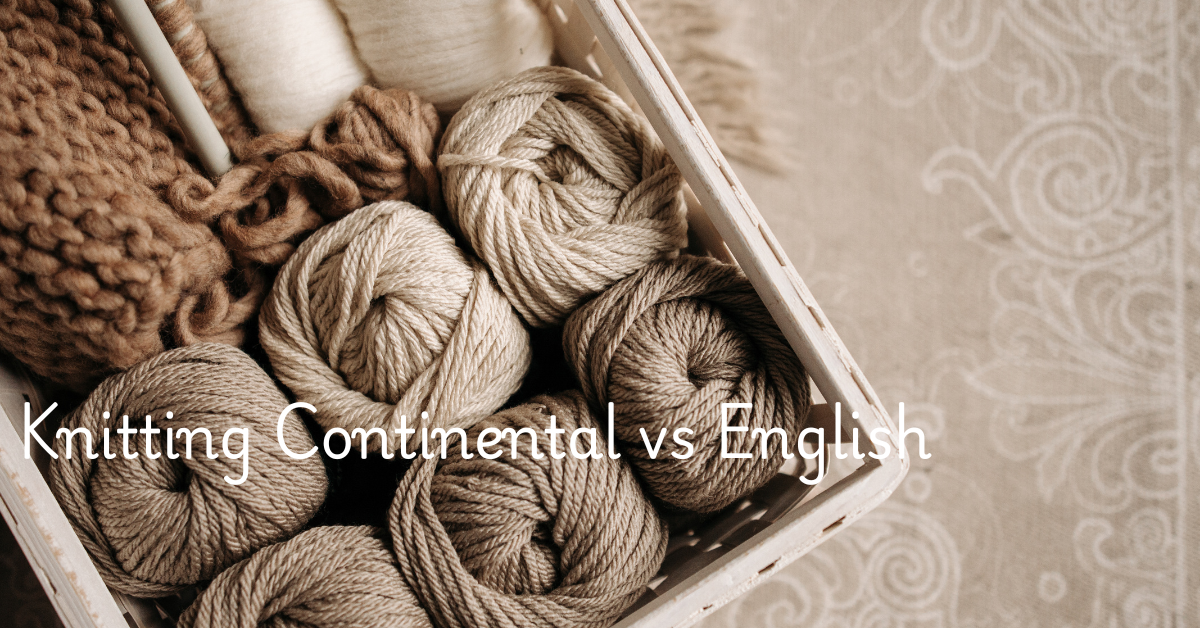When you start learning to knit, one of the first choices you’ll come across is knitting Continental vs English. These are the two most popular knitting styles in the world, and while both create the same fabric, they differ in how you hold the yarn, how you form stitches, and even how fast you can knit.
If you’ve ever wondered which method is best for you, this article will explain everything about Continental knitting vs English knitting, including their advantages, disadvantages, and tips to help you decide.
What is Continental Knitting?
In Continental knitting, also known as “picking,” the yarn is held in the left hand. The right needle picks the working yarn through the stitch, making it a very efficient motion. This style is popular in Europe and is often preferred by crocheters since the yarn-holding technique is similar.
Key features of Continental knitting:
- Yarn held in the left hand
- Right needle “picks” the yarn
- Known for speed and efficiency
What is English Knitting?
In English knitting, also known as “throwing,” the yarn is held in the right hand. The knitter wraps or “throws” the yarn around the needle before making each stitch. This style is widely practiced in the UK, US, and many other regions.
Key features of English knitting:
- Yarn held in the right hand
- Yarn is “thrown” or wrapped around the needle
- Easy for beginners to learn and control
Knitting Continental vs English: Side-by-Side Comparison
| Feature | Continental Knitting | English Knitting |
|---|---|---|
| Yarn hand position | Left hand | Right hand |
| Motion | Picking (shorter movements) | Throwing (larger movements) |
| Speed | Generally faster once mastered | Slower but more controlled |
| Best for | Colorwork, fast knitters, crocheters | Beginners, tension control, tradition |
| Learning curve | Steeper for some beginners | Easier for most beginners |
Advantages of Continental Knitting
- Speed: Often considered faster because of smaller hand movements
- Efficiency: Less strain on hands and wrists due to shorter motions
- Great for colorwork: Easier to hold multiple strands of yarn in one hand
- Crochet-friendly: Crocheters may find it more natural
Advantages of English Knitting
- Beginner-friendly: Many new knitters find it easier to control tension
- Traditional style: Common in English-speaking countries, with more resources available
- Strong stitch definition: Some knitters prefer the way stitches look in this method
- Great for textured patterns: Throwing gives more control when switching between knit and purl
Disadvantages of Continental Knitting
- Can be harder for beginners to master tension
- May feel awkward if you are used to English knitting
- Purl stitches can feel less intuitive at first
Disadvantages of English Knitting
- Larger hand movements make it slower than Continental knitting
- Can cause hand fatigue over long knitting sessions
- Stranded colorwork can be more challenging
Which Style Should You Choose?
When comparing knitting Continental vs English, there is no “better” method—only what feels right for you.
- If you want speed and efficiency, go with Continental knitting.
- If you value control and tradition, stick with English knitting.
- Many knitters actually learn both methods, switching depending on the project.
Tips for Learning Both Styles
- Practice with simple swatches before starting big projects.
- Focus on tension control, as it differs in both methods.
- Try stranded colorwork with both styles—you may find holding yarn in different hands helpful.
- Don’t be afraid to switch styles mid-project if one works better.
Final Thoughts
The debate of knitting Continental vs English isn’t about which method is superior, but about which one feels more comfortable and efficient for you. Many knitters use one as their primary style while keeping the other in their toolkit for certain projects.
Whether you prefer the quick, efficient motions of Continental knitting or the traditional, controlled movements of English knitting, the most important thing is that you enjoy the process. After all, knitting is as much about relaxation and creativity as it is about technique.

